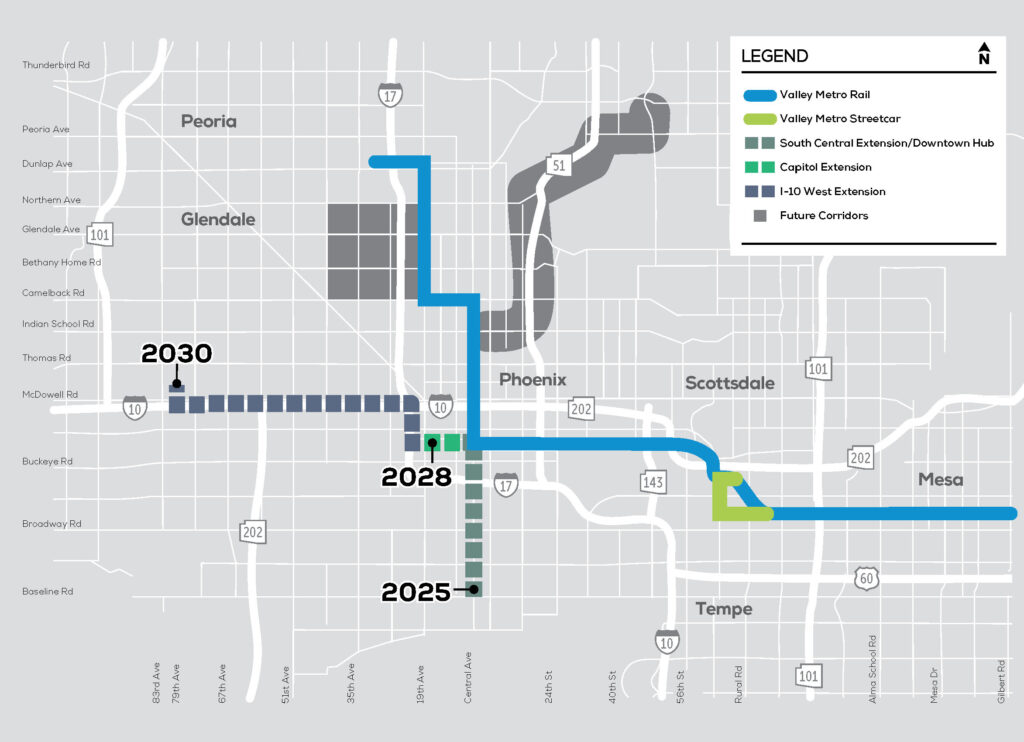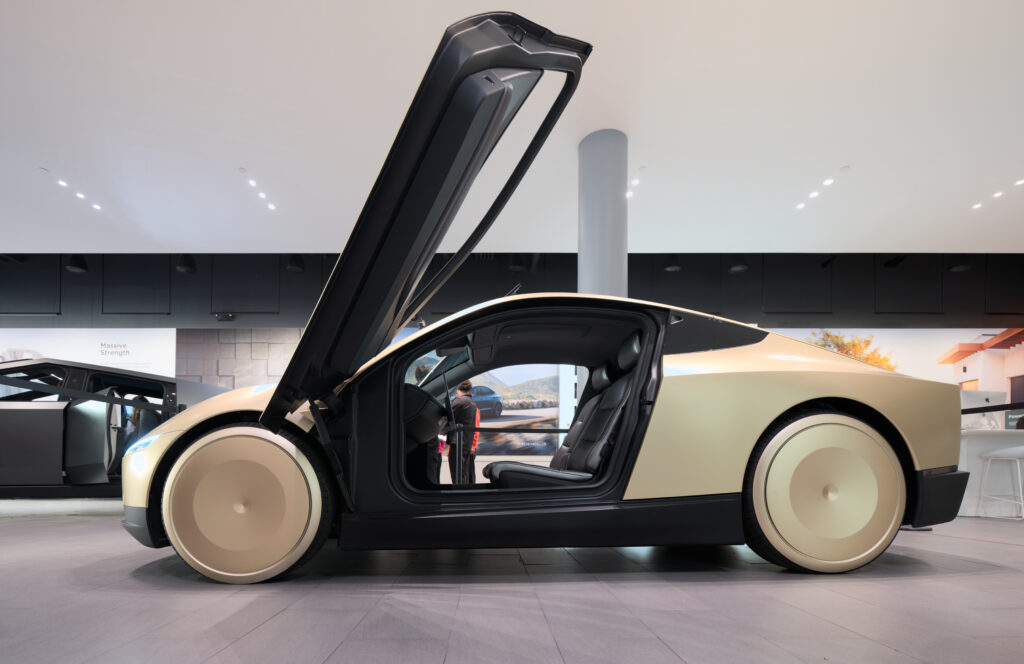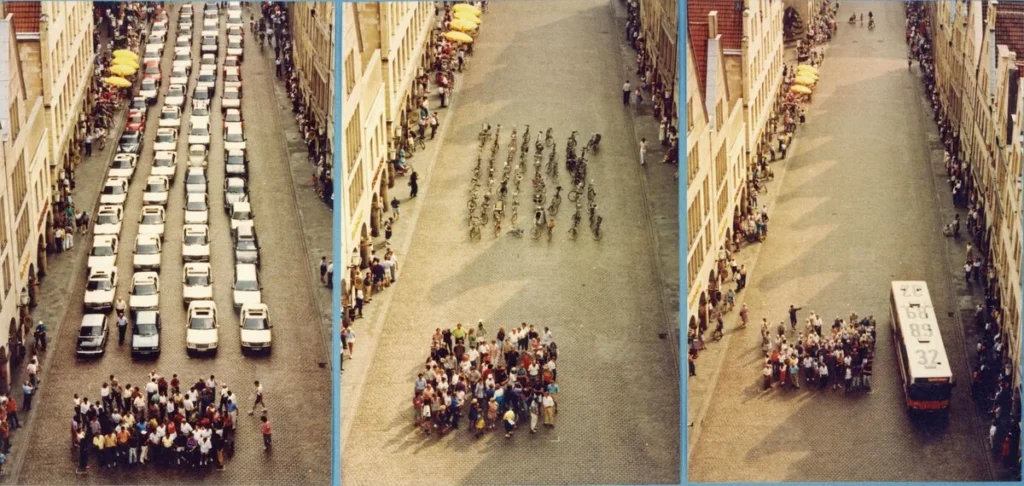I grew up in and around the suburbs of Phoenix, Arizona. Pedestrian paths are a rarity here, and the unbearable summer heat makes walking on uncovered sidewalks tortuous. The tree cover in most areas is sparse, and bicycle infrastructure is nearly non-existent. With a grid-system city layout and miles of sprawling suburban landscapes, Phoenix is one of the most car-centric metropolitan areas in the world; it’s unforgiving to those that don’t know how to drive or who can’t afford to own a vehicle, but there are some eyebrow-raising transportation alternatives. Waymo, the Alphabet-owned self-driving vehicle company, has been testing its autonomous taxi fleet in Phoenix since October 2017; today, they offer robotaxi services to Phoenix residents at prices that are comparable to ride-share services like Uber and Lyft. I’ve been fortunate enough to test these vehicles since 2019, before they were available to the general public; in my experience, riding with Waymo has been comfortable and convenient, but I am skeptical they will succeed if they are intended to become a panacea for Arizona’s transportation issues.
Arizona’s public transportation system is widely used, but underfunded and underdeveloped. The Valley Metro light rail system has undergone several expansions over the last decade, and has more planned over the next five years, but is still quaint compared to the public transit lines in major cities with a similar population as Phoenix. The Tempe Streetcar and a variety of perennially late buses comprise the rest of system. Bicycle infrastructure is similarly regarded as a silly expense for the city to undertake, largely due to the sheer size of the valley’s sprawl and the fact that few cyclists would be likely to ride in the 110-degree heat that lasts nearly half the year.

Countries like the Netherlands pride themselves on their bicycle-friendly infrastructure; cities in the Randstad area exemplify the 15-Minute City concept – an urban design where daily needs (work, groceries, schools, etc.) are within a 15-minute walk or bike ride. However, in the 60s and 70s, much of the Netherlands looked exactly as car-centric as some parts of Phoenix; their bicycle utopia has been the result of deliberate city planning and choices that are intended to make it more inconvenient to drive a vehicle and more convenient to cycle, walk, or jump on any number of their (impossibly clean) public transit lines.
While I idolize urban design in the Netherlands, Phoenix is not Amsterdam or Utrecht. Even if Phoenix continues to rapidly urbanize and expand its light rail system, the metro area is defined by its urban sprawl, a quality that is literally set in concrete and stone. Many feel that Phoenix needs a more creative solution to its transportation problem, and Waymo is betting that such a solution will be one (literally) driven by technology.
Waymo is working to a build a future where no one needs to own a car because an autonomous robotaxi is only a few minutes away at all times. In the world they’re selling us, self-driving cars could allow us to get from point A to point B for pennies on the dollar, freeing up our time to scroll on our phones, read a book, or get some work done. This is certainly a thrilling concept, but one that will likely prove to be vastly inefficient without at least some investment in public transit infrastructure. Will empty self-driving cars need to circle city blocks so that they can be available within a few moments for anyone that might hail them? While I’m highly skeptical it will be realized, it’s also worth pondering Tesla’s proposed Cybercab model; the idea is that these two-seat vehicles will be individually owned, but could be driving other people around as an autonomous cab when not being used by the owner. While this could cut down on extra congestion, the incentives for owners are unclear; furthermore, Waymo’s fleet is already operational in several major cities, and the timeline for the Cybercab rollout is uncertain.

Companies such as Waymo, Cruise, Zoox, and Tesla have accomplished leaps in technological capability over the past several years of development and testing. However, the fact remains that public transportation is vastly more efficient than car-based transportation. A typical bus could fit around 40 individuals; if all of those individuals usually drove their own vehicle and decided to take the bus that day, that single bus would cut down on the traffic congestion (and emissions) produced by 40 cars. Getting into a self-driving Jaguar i-Pace is inarguably much more comfortable and luxurious than finding a seat on a crowded bus; however, just a little more city funding allocated to purchasing newer buses, researching more efficient bus routes, and implementing more frequent cleaning routines could transform the public transportation experience.

I’m reminded of my time in Amsterdam last year. My partner and I would take the subway back to our hotel at the end of each evening, and every evening we would see the janitorial staff mopping the train platform. The subway stations and the trains themselves were some of the cleanest I had ever been in (save those that I took in Japan). The trains were always on time, as were the buses and the trams. While Phoenix has a tremendous amount of sprawl compared to Amsterdam, we can still learn some lessons from the way the Dutch use and take care of their public transportation infrastructure.
I grew up here and am so proud of my home state and city, as critical as I am of its many flaws. Phoenix has become a test-bed for miraculous wonders of technology that many have once thought impossible; from robotaxis that can take you to the airport to Prime Air delivery drones that can deliver you a package in 45 minutes, Phoenix is a very technologically forward place. However, we are now faced with some difficult questions about how we should address the transportation issues in this city:
Which future is the right one to invest into? Can we live in a future that has clean, reliable public transportation and luxurious self-driving robotaxis as a last-mile solution – or will the vested stakeholders of either structure seek to transform their model into the dominant one? Will we live in a future without speed limits – and how would that affect the quality of life for pedestrians? Who foots the bill for insurance, maintenance, and energy costs, and who stands to profit?
An urbanist YouTube channel, Not Just Bikes, produced a very thought-provoking video on this topic that inspired this week’s post. He makes a strong argument for why he thinks self-driving cars are not the right investment into our future. His video is very well-researched and does a fantastic job at imagining a potential future where self-driving cars dominate; it’s worth a watch if this topic interests you, even if you don’t agree with his position!

Leave a Reply